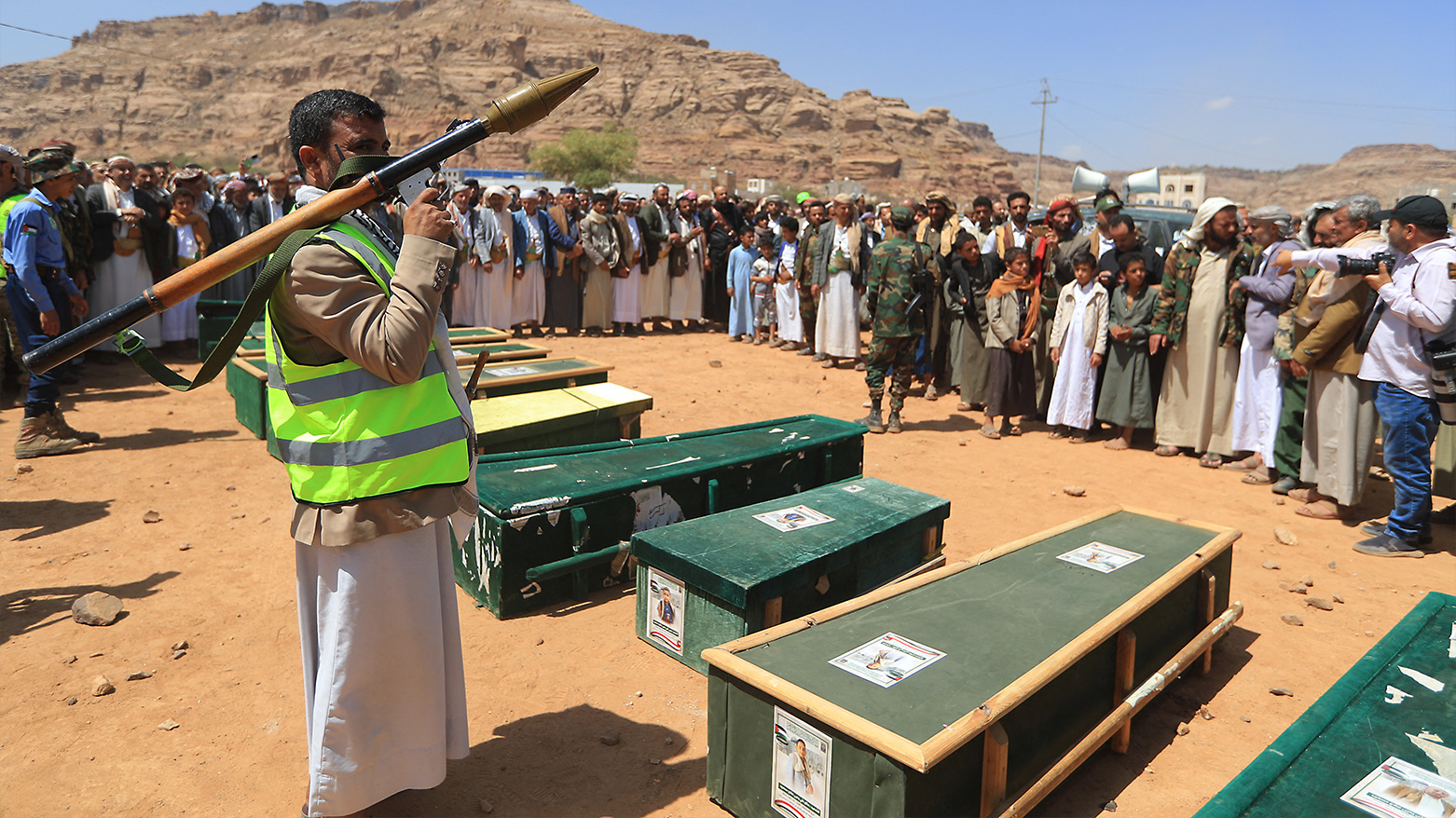U.S. Airstrikes Decimate Houthi Leadership as Red Sea Tensions Escalate
U.S. fighter jets struck Houthi targets in Yemen, hitting a key training camp in Malhan and killing senior air defense officials in a strike on Barash camp in Sanaa.

By Kamaran Aziz
ERBIL (Kurdistan24) - Renewed U.S. airstrikes pummeled Houthi military sites across Yemen late Thursday night, killing and injuring several air defense experts and senior Houthi commanders, according to regional media reports. The intensifying campaign marks one of the most aggressive escalations by the United States since the onset of its military operations in Yemen in response to Houthi threats to international shipping in the Red Sea.
Sources from Al Arabiya and Al Hadath reported that American fighter jets struck multiple Houthi positions, including a major training camp in Malhan, located in al-Mahwit Governorate in western Yemen. Simultaneously, strikes on the Barash military camp in the capital Sanaa reportedly eliminated high-ranking figures within the Houthi air defense command.
Additional U.S. strikes were confirmed in Amran Governorate, expanding the geographic reach of the operation.
Houthi-controlled media acknowledged the strikes, confirming that key sites in Asr and Hamdan districts, along with military targets in Jabal Attan west of Sanaa, had come under fire.
Earlier on Thursday, U.S. air raids also hit weapons depots near Saada and strategic positions in the Al-Hawak district of Hodeidah. In total, U.S. warplanes struck Houthi locations in at least four Yemeni governorates within the span of 24 hours.
Two days prior, on the 46th day of Washington’s aerial campaign, U.S. forces carried out 49 airstrikes targeting launch platforms, weapons storage facilities, and military barracks across six provinces. These continued operations highlight the scale and persistence of American military engagement aimed at dismantling Houthi capabilities.
According to a report by The New York Times, the British Royal Air Force also joined the U.S. in a coordinated strike this week, marking the first such joint operation since President Donald Trump returned to office. Britain’s Ministry of Defense stated that Typhoon jets participated in precision bombing missions targeting drone manufacturing facilities near Sanaa.
The operation, carried out after nightfall, was intended to degrade Houthi capabilities while minimizing civilian casualties. British Defense Secretary John Healey confirmed to Parliament that the mission successfully struck all planned targets with no reported civilian harm.
The joint operation followed controversy stirred by U.S. Defense Secretary Pete Hegseth’s use of the Signal messaging app to post operational details, raising security concerns among allies. Despite this, British officials reaffirmed the integrity of their intelligence and communication systems.
Meanwhile, according to The Wall Street Journal, President Trump is pressuring Egypt to offer free passage for American ships through the Suez Canal in return for U.S. efforts to secure the Red Sea shipping lanes. President Trump, who has pushed similar quid pro quo arrangements in foreign policy, argued publicly that Egypt and other beneficiaries of U.S. military efforts should bear part of the burden. Egypt has declined to commit to Trump’s demand, suggesting instead that resolving the conflict in Gaza would more effectively curb Houthi aggression.
As The Washington Post reported, the U.S. campaign has come under scrutiny following allegations of civilian casualties. On April 28, a strike allegedly hit a migrant detention center in Saada, killing at least 68 African migrants, according to Houthi sources. U.S. Central Command acknowledged the reports and said it had initiated a battle damage assessment. Photos and videos from Reuters showed widespread devastation at the site.
Human rights groups have raised alarms about increasing civilian risks in the U.S. air campaign, particularly after Airwars, a UK-based watchdog, noted a shift toward more lethal targeting patterns under the Trump administration. Democratic senators in Washington have demanded an explanation for the rising civilian toll.
U.S. Central Command said it has now struck over 800 targets in Yemen since launching “Operation Rough Rider” on March 15, 2025. Yet the Pentagon also confirmed that it will no longer disclose operational details to the public in order to preserve security.
Adding to the cost of the ongoing campaign, the U.S. has lost seven MQ-9 Reaper drones, each valued at approximately $30 million, since mid-March. The Navy also confirmed the accidental loss of an F/A-18E Super Hornet jet worth over $67 million aboard the USS Harry S. Truman.
Despite these setbacks, U.S. military sources insist the campaign is producing tangible results, citing a 69% drop in Houthi missile launches and a 55% decline in drone attacks, according to statements referenced by The New York Times.
As Red Sea tensions persist, the Trump administration continues to push a hardline strategy with far-reaching implications for global trade and regional security. Whether this military effort will ultimately restore stability—or provoke further regional blowback—remains an open question as diplomatic channels appear increasingly strained.
